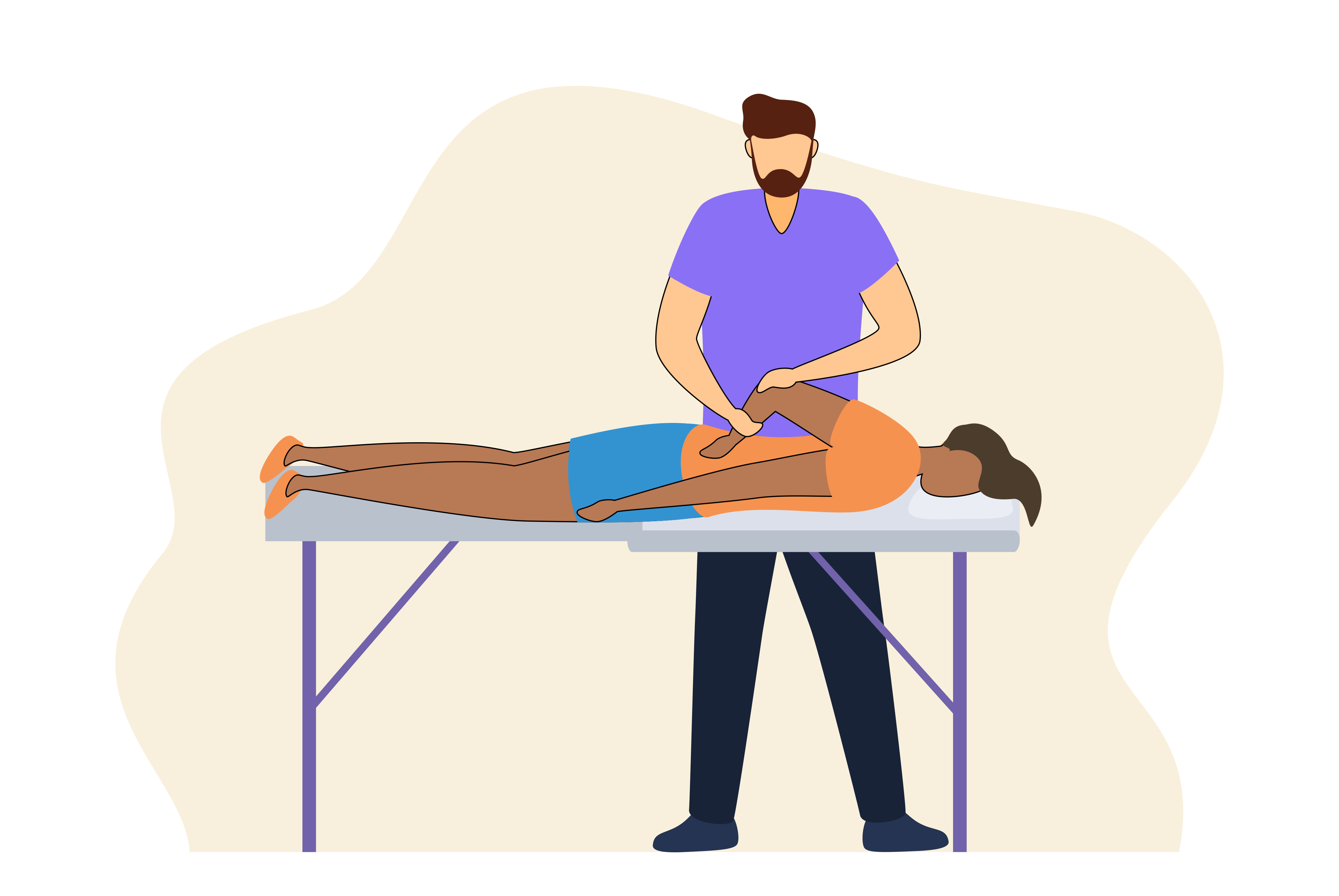Overview
- Why massage therapy continuing education is important for your career in wellness
- What qualifications and requirements go into massage therapy continuing education
- Different types of massage therapy continuing education

With attitudes around wellness education broadening every day, many people are finding lucrative and fulfilling careers as massage therapists. A few years ago, a massage therapist might have been a professional with an exclusive background in myofascial stimulation, but now, the field of massage therapy is much more inclusive.
Massage professionals now frequently work in a variety of modalities, such as aromatherapy, kinesiology, and reflexology. Basic bodywork has expanded to specialized fields, like sports massage, oncology massage, and pregnancy massage.

Keeping up with these evolving fields has made continuing education more crucial than ever for massage therapists who want to stay up-to-date on developments in their field. Continuing education (CE) courses are generally offered by an approved provider, such as participating universities, community colleges, or professional associations.
In the case of massage therapy, many continuing education courses are mandatory for license renewal and are frequently offered via a licensee’s original massage school. Some programs provide access to CE hours that can be completed via online courses as well, although many require a designated split of online and in-person coursework.
Continuing education requirements for massage therapists vary by state, association, and specialization. This article will help you find the right continuing education classes for your massage therapy career and serve as a resource for newly licensed massage therapists (LMTs) to understand basic license renewal requirements.
Continuing education is critical to ensuring that massage therapists stay knowledgeable and up-to-date on the latest practices and developments in massage therapy. Since massage therapy is recognized as a form of health care, new medical and scientific work surrounding this field is always being researched and published. Massage therapy CE can assist in professional growth, increase even a seasoned therapist’s foundational knowledge, and heighten clinical reasoning skills to the benefit of both patients and practitioners.
Some states regulate massage therapy at the state government level. In such places, massage therapists need to meet the requirements set forth by the state board to stay licensed. Likewise, many massage professionals achieve licensing through the National Certification Board for Therapeutic Massage and Bodywork (NCBTMB). The NCBTMB is an excellent place to start looking for a continuing education provider that suits your particular career goals in massage therapy.
Although requirements vary by license type and many other factors, most massage therapists will be expected to complete some form of ongoing continuing education throughout their professional careers. Massage therapy continuing education credits are measured by a unit called a “massage therapy CEU.” Different licenses, programs, specialties, and regions will designate different numbers of massage therapy CEUs as requirements for upgraded or maintained licenses.
For instance, New York requires 36 massage therapy CEUs every three years, whereas Florida requires license renewal every odd year. The NCBTMB sets forth a mandatory minimum of 24 CEUs every two years, with at least three of those completed in ethics coursework to maintain a national board credential. There are also different CEU requirements for massage therapists who run their own practices where other licensees are employed.
There are different ways to complete massage therapy continuing education courses. Depending on your schedule, budget, and license requirements, you can choose to do some or all of your CEUs at a single location, such as a community college or massage school. You may likewise choose to take online massage classes for a portion of your requirements if it’s allowed by your state board or licensing agency.
Keeping up with nationally recognized professional associations — such as Associated Bodywork and Massage Professionals (ABMP) — is an easy way to know what classes are available in your area and what new modalities might be of interest to your continuing education hours. National CE providers often tour around, setting up shop in local areas on a schedule that allows them to visit massage schools, universities, and even medical practices. A few of the most common types of massage therapy CE certifications include:
Hours of continuing education can be purchased in bulk sets of 50 to 100 hours, offered via webinar, or even stretched across one year of completion at a physical location.
The American Massage Therapy Association (AMTA) is an approved provider of the NCBTMB. It offers in-person and online CEUs that are quality vetted to meet requirements in each state. AMTA is a membership-based association that provides benefits to members. Still, it doesn’t exclude non-members and leaves its online CE library open to any massage therapist wishing to brush up on their skills. AMTA likewise provides access to specialty certificates in fascial therapy and sports massage.
Fulfilling CE requirements is about much more than completing a professional mandate. Having up-to-date research at your disposal when dealing with clients allows you to be a better educator to the public. By the same token, the more certifications and specializations you can obtain, the wider your professional possibilities will be.
For instance, you may not initially think you have much interest in a course like oncology massage, but then, a local hospital puts out a call for an LMT who has this kind of training. Without completing the continuing education class, you might find yourself ineligible for that opportunity.

The same goes for finding new points of study. Maybe you’ve never given a pediatric massage before, but after taking the corresponding CEUs, you discover you enjoy it more than another specialization you’ve spent more time on. The primary benefit of massage therapy continuing education is that it opens practitioners up to professional interests and opportunities they would not have otherwise.
Taking massage therapy CE seriously shows you’re committed to your practice. Not only can it help you command a higher salary, but it also gives you an advantage with potential employers who are looking for versatility and a willingness to learn.
Like everyone else, an LMT needs an attractive resume to find job opportunities. Be sure you feature your massage therapy CEUs in a way that helps potential clients and prospective employers see the breadth of your knowledge. Consider your career goals, practice setting, and surrounding community when choosing which CE credits to highlight on your resume.
For example, if you want to work predominantly in a spa setting, massage therapy classes in body wraps, scrubs, and ayurvedic therapies might be best to promote. However, if you want to provide services at an orthopedic clinic, coursework in rehabilitation and stretching may prove more fruitful. Always list your massage therapy continuing education credentials in a prominent place on your resume alongside the rest of your formal professional certifications.
Whether you’re in your first year of massage therapy or have been professionally involved in the wellness field for decades, Joblist can help you find your next licensed massage therapy position. By curating jobs using the information you provide, we narrow the field for you so that all you see are job options that actually relate to your criteria.
Start with our quick and easy quiz today, and then watch as Joblist connects you with massage therapy jobs in your area.